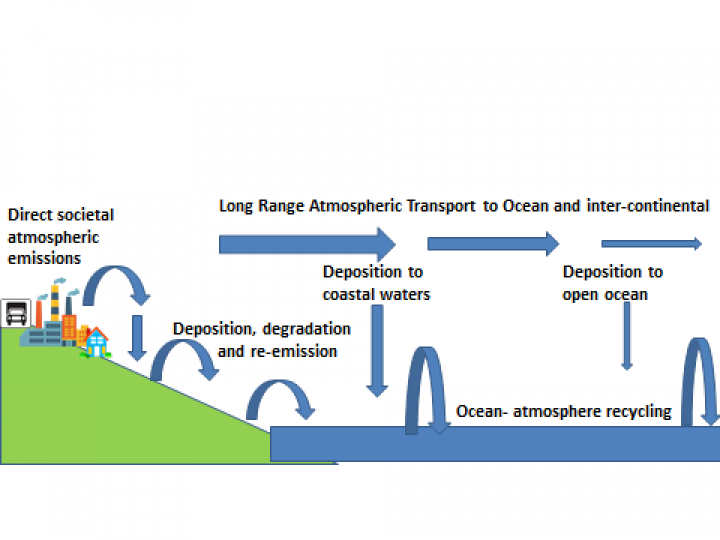Background
In recent years, there has been increasing concern about microplastic pollution in the ocean. Microplastics pose a potential health risk for aquatic life that consume them, as well as humans who eat food from the oceans.
Microplastics are predominantly transported into the ocean via land-based inputs (see WG 40) and sea-based inputs (see WG 43) such as plastic debris in the ocean, but WG 38 has investigated the potential that microplastics are also transported to and from the ocean via the atmosphere.
Workshop
WG 38, in partnership with GESAMP Working Group 40, carried out a virtual workshop from 17 to 19 November 2020.
Tim Jickells and Robert Duce (Co-chairs of WG 38) and Peter Kershaw (Chair, WG 40) convened the workshop. Steve and Deonie Allen (UK), Daoji Li and Kai Liu (China), Peter Liss (UK), Maria Kanakidou (Greece), and Oksana Tarasova (WMO, Switzerland) were members of the Organizing Committee. Twenty-nine individuals from fourteen nations who have had experience with atmospheric and oceanic microplastics or with air-sea exchange of material participated in the three-day workshop.
Please find the Terms of Reference for this work here
The workshop was organized around 8 different sessions related to microplastics in the atmosphere and ocean. These were:
- Brief presentations by individuals or groups that have made measurements of atmospheric microplastics or have made flux calculations to the ocean.
- A general discussion of what the major unknowns are in our understanding of atmospheric microplastics and their transport to/from the ocean.
- Discussion of sources of atmospheric microplastics, their relative strengths, and their emission and transport characteristics.
- Discussion of how to determine a good estimate of the transport of microplastics to and from the global ocean, considering sources, transport modelling, monitoring, recycling from the ocean surface, etc.
- Consideration of needs and required future advances relative to sampling and measurement techniques and sampling locations for microplastics.
- Discussion of possible modelling approaches for atmospheric transport of microplastics to the oceans and other information needs.
- Consideration of a synthesis report and publication writing tasks to be undertaken by individuals or groups, type of publications and/or reports, to be prepared, and timeframe for outputs to be completed.
The workshop was a success. A GESAMP Reports and Studies document summarizing the results of this workshop is presently under preparation. Two papers from this workshop were published in the peer-reviewed literature and are listed at the end of this webpage (numbers 18 and 21). One of these is a detailed review paper that was published by Nature Reviews – Earth Environment, in May 2022. Lead authors Deonie and Steve Allen are among the leading scientists in the measurement of microplastics in the atmosphere/ocean system.
Main findings
The paper published in Nature indicates that atmospheric transport may indeed be an important, and previously little considered, route by which microplastics reach the ocean. The sources of these atmospherically transported microplastics are both direct emissions and also the fragmentation, resuspension and redeposition (possibly many times) of plastics already released into the environment, meaning that emission control alone will not address this issue. Microplastics currently in the ocean may also be emitted into the atmosphere via air-sea exchange processes and transported back to land. The paper goes on to propose a cost-effective global strategy to better quantify the role of atmospheric cycling of microplastics by building on existing sampling networks of the Global Atmosphere Watch (GAW) Programme of the World Meteorological Organization.
Schematic representation of microplastic cycling illustrating the recycling of this material between land, ocean and atmosphere, during which the plastics may become smaller but are not actually degraded.
Please find a full list of peer-reviewed publications of GESAMP Working Group 38 here
